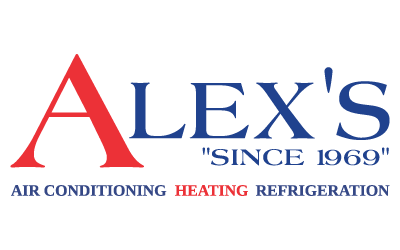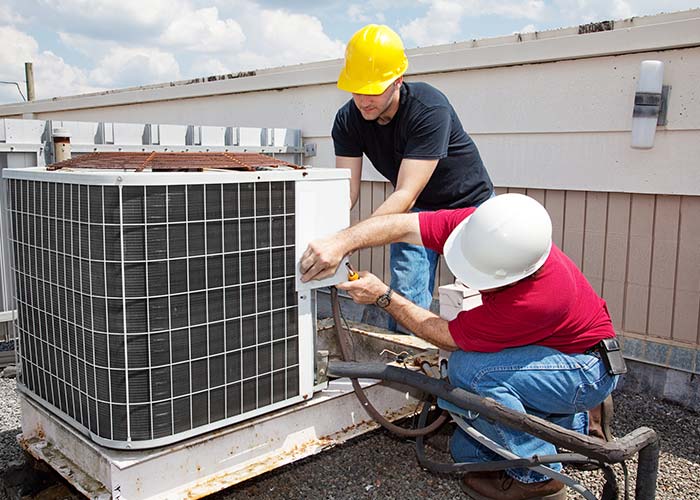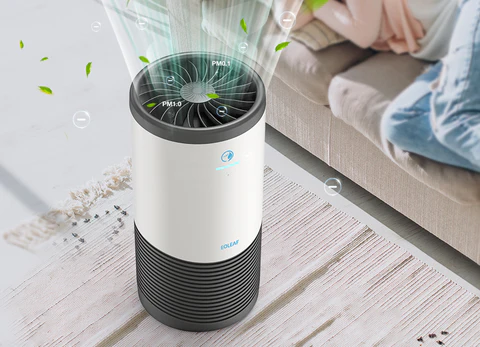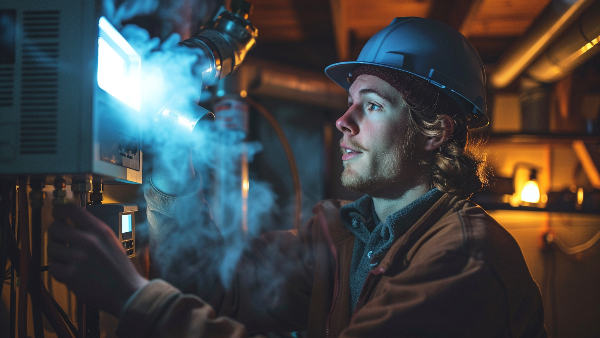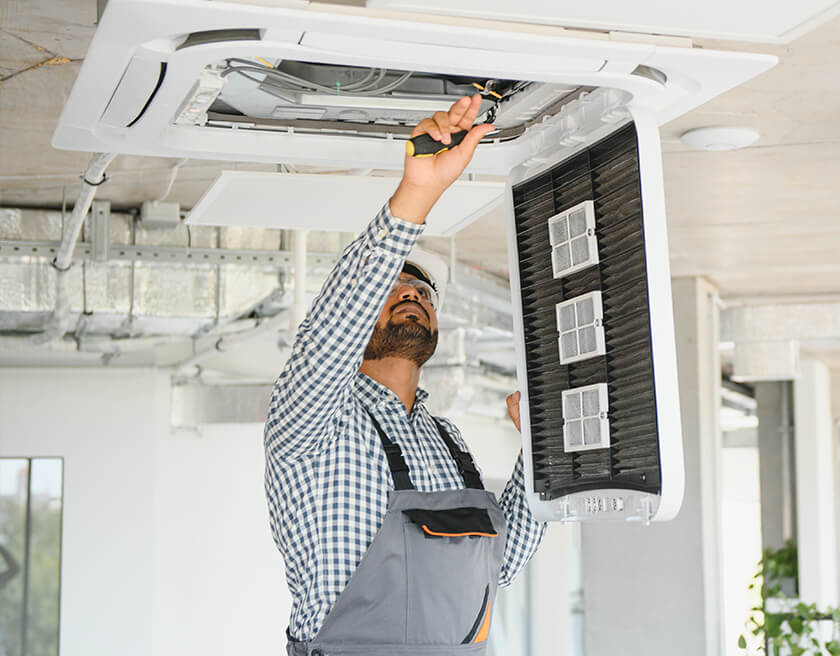Ductwork Matters: Improve Efficiency and Indoor Air Quality
Introduction
Many Texas homeowners focus on the HVAC unit itself — the AC, furnace, or heat pump — but often overlook the system that delivers conditioned air: the ductwork. Properly designed, sealed, and maintained ductwork is critical to energy efficiency, indoor air quality (IAQ), and comfort.
In fact, studies from the U.S. Department of Energy show that duct leaks can waste up to 30% of heating and cooling energy, costing homeowners hundreds of dollars annually. Duct issues not only increase utility bills but also reduce system performance and contribute to poor air quality.
This guide explains why ductwork matters, common problems, and practical solutions that help Texas homeowners save energy, protect indoor air quality, and extend the life of their HVAC system.
🔗 Related: How Regular AC Maintenance Saves Texas Homeowners Hundreds Each Year
Understanding the Role of Ductwork in HVAC Systems
Ducts are the highways that deliver heated or cooled air from your HVAC system to every room. When designed correctly, ductwork ensures:
Consistent airflow throughout the home
Efficient energy transfer with minimal loss
Effective humidity control, supporting overall comfort
Healthy indoor air quality, reducing dust and allergens
Improperly sized, leaky, or obstructed ducts compromise all of these factors. For Texas homeowners, where HVAC systems run nearly year-round, optimizing ductwork can translate into significant energy savings and better comfort.
Common Ductwork Problems in Texas Homes
1. Leaky Ducts
Gaps, holes, or disconnected joints in ductwork allow conditioned air to escape into attics, crawl spaces, or walls. The result: higher energy bills and uneven cooling.
Impact on efficiency: The AC or furnace runs longer to reach the thermostat setting.
Impact on comfort: Rooms may feel hotter or colder than others.
Impact on air quality: Leaks pull dust, insulation particles, and even pests into the airflow.
2. Poorly Sized Ducts
Ducts that are too small restrict airflow, while oversized ducts reduce system pressure and cause uneven cooling. Both issues increase energy use and reduce HVAC lifespan.
3. Obstructed or Dirty Ducts
Accumulated dust, pet hair, or debris inside ducts reduces airflow and circulation, forcing HVAC systems to work harder. Dirty ducts can also aggravate allergies and respiratory conditions.
4. Lack of Insulation
In Texas, where attics can reach extreme temperatures, uninsulated ducts can lose or gain heat, reducing system efficiency and causing uncomfortable indoor temperatures.
How Ductwork Impacts Indoor Air Quality
Air that passes through ducts carries everything in its path into your living spaces. Leaky, unclean, or poorly maintained ducts can introduce:
Dust and allergens
Mold and mildew from high humidity areas
Odors from attics, crawl spaces, or garages
By maintaining clean, sealed, and insulated ducts, homeowners can dramatically improve indoor air quality, reduce allergy triggers, and support HVAC efficiency.
🔗 Related: Allergens, Humidity Control, and Modern Air Purification Solutions
Solutions for Improving Ductwork Efficiency
1. Seal Leaks with Mastic or Metal Tape
Professional duct sealing prevents conditioned air from escaping. While homeowners can spot obvious holes, comprehensive sealing is best performed by a licensed HVAC technician.
2. Add or Improve Duct Insulation
Insulated ducts in attics or crawl spaces prevent heat gain/loss. This reduces energy waste and ensures that cooled or heated air reaches its intended destination at the proper temperature.
3. Clean Ducts Regularly
Air ducts should be inspected and cleaned every 3–5 years, or sooner if you notice excessive dust or airflow reduction. Cleaning removes debris, allergens, and microbial growth that can compromise indoor air quality.
4. Optimize Airflow with Proper Design
Professional evaluation can ensure ducts are sized and routed correctly for even distribution, balanced pressure, and minimal resistance. This includes checking return air pathways and vent placement.
5. Consider Zoning Systems
For larger Texas homes, zoning allows you to control different areas independently. Properly designed zones reduce energy waste and maintain comfort in occupied spaces while minimizing unnecessary cooling or heating in unused areas.
The Role of Technology in Duct Efficiency
Smart Thermostats
Smart thermostats, integrated with properly designed ducts, monitor airflow, temperature, and humidity to adjust system performance dynamically.
🔗 Related: Smart Thermostats for Texas Homes: Comfort, Savings, and Control
Airflow Monitoring Systems
Modern sensors can detect low airflow, leaks, or blockages in real time, allowing homeowners or technicians to correct problems before energy is wasted.
Whole-Home Air Purifiers
Integrating air purifiers with ducts ensures that the air being circulated is clean, helping to remove allergens, mold spores, and other contaminants.
Best Practices for Homeowners
Schedule annual duct inspections alongside HVAC maintenance.
Ensure proper sealing and insulation of ducts in attics or crawlspaces.
Monitor airflow and balance vents for even temperature distribution.
Avoid storing items in attics or crawlspaces that block ducts.
Pair duct improvements with energy-efficient upgrades for maximum impact.
🔗 Related: Energy-Efficient HVAC Upgrades: What’s Worth It in 2025?
Benefits of Properly Maintained Ductwork
Reduced Energy Costs: Preventing air leaks and improving insulation cuts wasted energy.
Enhanced Comfort: Even temperatures throughout the home without hot or cold spots.
Improved Indoor Air Quality: Cleaner air reduces allergens and irritants.
Extended HVAC Lifespan: Reduced strain on the system prevents premature wear.
Conclusion
Ductwork may be out of sight, but it is far from irrelevant. For Texas homeowners, efficient, sealed, and clean ducts are critical to reducing energy waste, improving indoor air quality, and maximizing HVAC system performance.
By investing in professional duct inspection, sealing, insulation, and maintenance — alongside smart thermostats and energy-efficient upgrades — you can enjoy lower bills, consistent comfort, and healthier indoor air year-round.
For expert evaluation and professional ductwork services, contact Alex’s Air — your trusted partner in efficient, healthy, and reliable HVAC systems for Texas homes.
